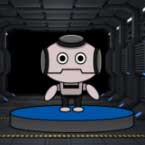
Star ratings can mislead shoppers and impact sales, UBC study shows
CBC
If you're deciding between two products, both rated a 3.5, but one shows the score with stars while the other uses plain numbers, odds are you'll pick the one with stars.
That's the key finding from a recent study by the University of B.C. Sauder School of Business, which reveals that consumers consistently overestimate ratings shown as stars and underestimate the same values when shown as numbers.
"Whenever I see a star rating, especially if it's a fractional one, which leads to incomplete star pictures like 3.5 or 3.7, I take a moment to ask myself, am I being fooled?" said Deepak Sirwani, an assistant professor at UBC Sauder and co-author of the study.
When a product rating is shown using stars, a score like 3.5 is typically displayed as three full stars followed by a half-filled fourth star.
Visually, this creates the impression of an incomplete image, says Sirwani.
"So we tend to round up and complete the incomplete picture with the visual ratings," he explained during an interview with CBC's On The Coast.
In contrast, numbers prompt consumers to fixate on the first digit — a phenomenon known as the "left-digit effect."
"We read from left to right, especially in Western civilization and a lot of other civilizations, so we focus more on three in the number 3.5 … and round down."
That gap in perception, according to the research, can have a massive effect.
"When you show a product using a star rating, your sales might triple compared to the same rating shown using numbers," Sirwani said.
But the study also warns that star ratings might lead to inflated expectations — and eventually, disappointed customers.
"[Consumers] might feel they were over promised and under delivered so that may increase negative reviews," the study's co-author said.
Researchers recommend using "visually complete stars" — ones that only show a star's filled-in part, not its overall border — to minimize bias.
Vancouver-based retail strategist David Ian Gray called the findings "clever" and "unique."

 Run 3 Space | Play Space Running Game
Run 3 Space | Play Space Running Game Traffic Jam 3D | Online Racing Game
Traffic Jam 3D | Online Racing Game Duck Hunt | Play Old Classic Game
Duck Hunt | Play Old Classic Game











